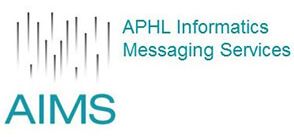HITAC Task Force Comments on ONC HTI-1 NPRM
 Noam ArztOn June 15, 2023, the Health Data, Technology, and Interoperability: Certification Program Updates, Algorithm Transparency, and Information Sharing (HTI-1) Proposed Rule Task Force 2023 released its recommendations on the Health Data, Technology, and Interoperability: Certification Program Updates, Algorithm Transparency, and Information Sharing (HTI-1) Proposed Rule which proposes new provisions from the 21st Century Cures Act and makes updates to the ONC Health IT Certification Program (Certification Program). The limited-engagement task force met intensely during April, May, and June 2023 to develop its own set of observations and recommendations which were submitted to the Office of the National Coordinator for Health Information Technology (ONC).
Noam ArztOn June 15, 2023, the Health Data, Technology, and Interoperability: Certification Program Updates, Algorithm Transparency, and Information Sharing (HTI-1) Proposed Rule Task Force 2023 released its recommendations on the Health Data, Technology, and Interoperability: Certification Program Updates, Algorithm Transparency, and Information Sharing (HTI-1) Proposed Rule which proposes new provisions from the 21st Century Cures Act and makes updates to the ONC Health IT Certification Program (Certification Program). The limited-engagement task force met intensely during April, May, and June 2023 to develop its own set of observations and recommendations which were submitted to the Office of the National Coordinator for Health Information Technology (ONC).
 Though not strictly speaking focused on public health issues, I’d like to offer a few observations of my own regarding their recommendations which do zero in on key public health issues proposed in this NPRM as discussed in our previous blog post.
Though not strictly speaking focused on public health issues, I’d like to offer a few observations of my own regarding their recommendations which do zero in on key public health issues proposed in this NPRM as discussed in our previous blog post.
The first area to comment upon is the new proposal for Insights Conditions, essentially reporting metrics for certified EHR technology mandated by the 21st Century Cures Act but not specified in detail. There are two measures related to public health that are identified in the NPRM, both related to immunization data interoperability. The Task Force expressed its general support for introducing these measures (recommendations 26 – 36) but did not offer any real detailed recommendations concerning the proposed specifics. This mirrored the rather limited discussion that the Task Force conducted during their meetings, and perhaps represents a “missed opportunity” to offer some more meaningful recommendations.

The second area relates to Electronic Case Reporting (eCR). Here the Task Force seems to focus (in its three recommendations 9 – 11) on just one concept: the need to ensure that real-world testing includes the ability for EHRs to generate and consume reports using both the CDA and FHIR standards by requiring transformation from one to the other using a commercially-available service.
The APHL AIMS platform through which the vast majority of eCR reports flow has the capability to provide this translation between standards without the use of a commercially-available service. In addition, the Task Force recommends that real-world testing for eCR require actual “live” testing with public health agencies. While I recognize the importance of real real-world testing, we need to be sure not to create an unfunded mandate for public health to all of a sudden have to support real-world testing so that EHR vendors can satisfy this requirement.
 One additional minor point: The Task Force did make one recommendation (#50) in response to the SMART Health Links Request for Information. But in this case, it appears that they missed the mark: Task Force members did not seem to appreciate the difference between SMART Health Cards which represent a limited amount of data embedded in a QR code, and SMART Health Links whose QR code contains a URL which can point to a much more extensive, and updating, set of data about a patient.
One additional minor point: The Task Force did make one recommendation (#50) in response to the SMART Health Links Request for Information. But in this case, it appears that they missed the mark: Task Force members did not seem to appreciate the difference between SMART Health Cards which represent a limited amount of data embedded in a QR code, and SMART Health Links whose QR code contains a URL which can point to a much more extensive, and updating, set of data about a patient.
This post was authored by Noam H. Arzt, and first published in the HLN Blog. It is reprinted by Open Health News with permission. The original post can be found here.
- Tags:
- 21st Century Cures Act
- APHL AIMS platform
- certified EHR technology
- eCR reports
- EHR vendors
- electronic case reporting (eCR)
- HLN Consulting
- HTI-1
- HTI-1 Proposed Rule Task Force 2023
- immunization data interoperability
- Noam Arzt
- Office of the National Coordinator for Health Information Technology (ONC)
- ONC Health IT Certification Program
- ONC HTI-1 NPRM
- public health agencies
- public health issues
- QR code
- real real-world testing
- SMART Health Cards
- SMART Health Links
- SMART Health Links Request for Information
- unfunded mandate for public health
- HITAC Task Force Comments
- Login to post comments